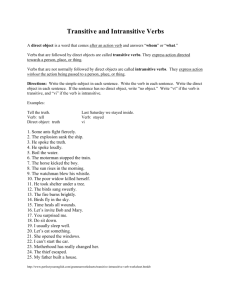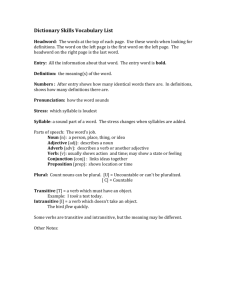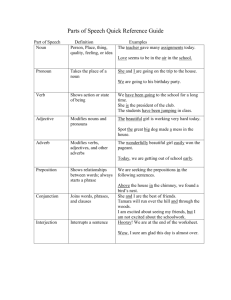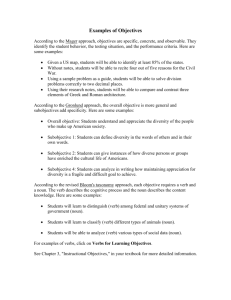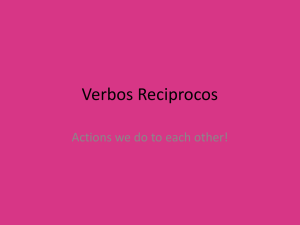Action Verbs
advertisement
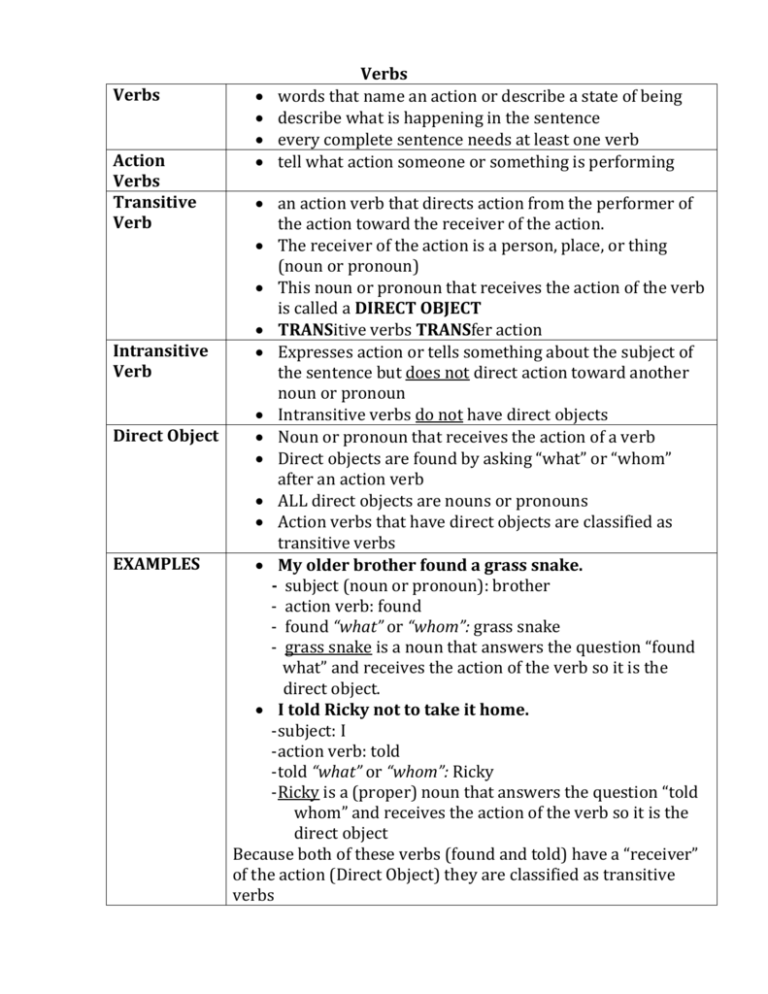
Verbs Action Verbs Transitive Verb Verbs words that name an action or describe a state of being describe what is happening in the sentence every complete sentence needs at least one verb tell what action someone or something is performing an action verb that directs action from the performer of the action toward the receiver of the action. The receiver of the action is a person, place, or thing (noun or pronoun) This noun or pronoun that receives the action of the verb is called a DIRECT OBJECT TRANSitive verbs TRANSfer action Intransitive Expresses action or tells something about the subject of Verb the sentence but does not direct action toward another noun or pronoun Intransitive verbs do not have direct objects Direct Object Noun or pronoun that receives the action of a verb Direct objects are found by asking “what” or “whom” after an action verb ALL direct objects are nouns or pronouns Action verbs that have direct objects are classified as transitive verbs EXAMPLES My older brother found a grass snake. - subject (noun or pronoun): brother - action verb: found - found “what” or “whom”: grass snake - grass snake is a noun that answers the question “found what” and receives the action of the verb so it is the direct object. I told Ricky not to take it home. -subject: I -action verb: told -told “what” or “whom”: Ricky -Ricky is a (proper) noun that answers the question “told whom” and receives the action of the verb so it is the direct object Because both of these verbs (found and told) have a “receiver” of the action (Direct Object) they are classified as transitive verbs Practice: 1. Label the subject of the sentence with a “S”. 1. Scales cover a snake’s body. 2. Snakes do not have legs or arms. 2. Label the Action Verb with an “AV”. 3. Snakes lose their fangs periodically. 3. Label the direct object with an “DO” 5. Snakes eat, rats, mice, and frogs. 4. Some species also shed their skin. Gentle reminders: 1. Subject of the sentence= noun or pronoun the sentence is about 2. Action verbs= tell what action the subject is performing 3. Transitive action verbs= directs the action from the subject to a receiver of the action (called the direct object) 4. Direct objects=nouns or pronouns that receive the action of a transitive verb. They are found by asking “what” or “whom” after the verb.



